Stone carvings at West Tanfield

There stood a little tower, with a very pretty oriel window of six lights with tracery and a pyramidal stone roof, beckoning me to explore. The 15th Century, three storey gatehouse is known as The Marmion Tower and is presumed part of a no longer existing manor house which stood close to the banks of the River Ure. The monuments of the manor’s Marmion family owners lie in the adjacent church.

On a recent trip to West Tanfield, North Yorkshire I spent some time looking round the Marmion Tower and St Nicholas Church. Stone heads, human and animal grace the windows.

It is always interesting to see how the carvings are done, how this particular stone carver rendered expression.
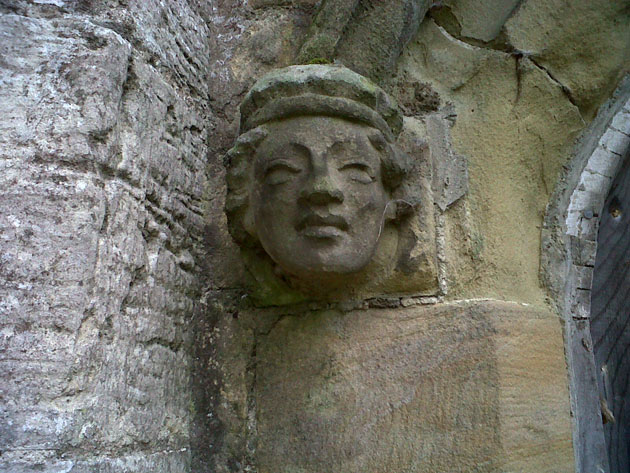
A drastic restoration of the church was undertaken in 1859 when part of the 12th Century stone was replaced. In the north aisle and chapel are a splendid series of monuments of the Marmions. A remarkable late 14th Century stone altar tomb supports two exceptionally fine Derbyshire alabaster effigies, one male (Sir John Marmion who died in 1397) and lying next to this a female (John Marmion’s wife Elizabeth).
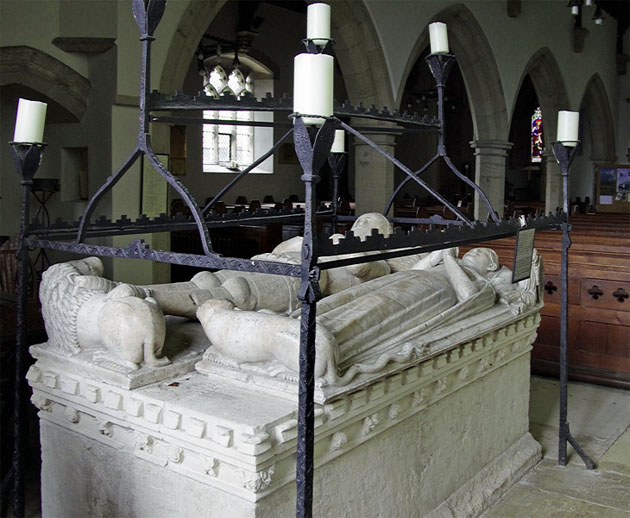
I noticed that all the male figures had lions at their feet and the females had dogs. I later learn this is to do with medieval symbolism and belief. The lion, King of animals – a symbol of strength, power and justice, valour and nobility. In the middle ages it was thought that still-born lion cubs came to life again after three days thanks to the breath of the mother.
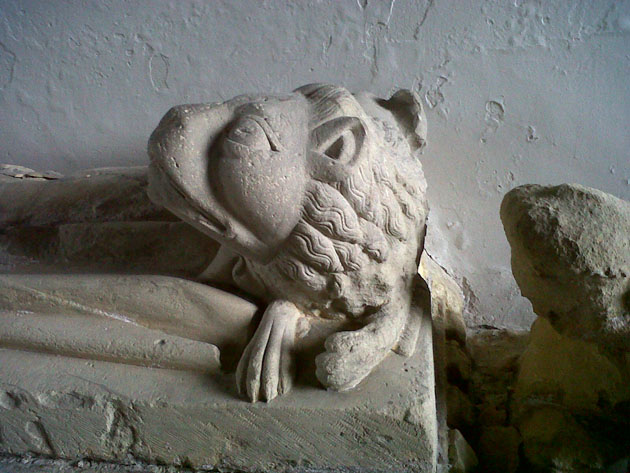
The dog is often found at the feet of women, as the female symbol and guardian. The dog, or hound represent fidelity and loyalty, to the sovereign and to the kingdom, but especially of faith. The dog is also a guide in the kingdom of the dead.
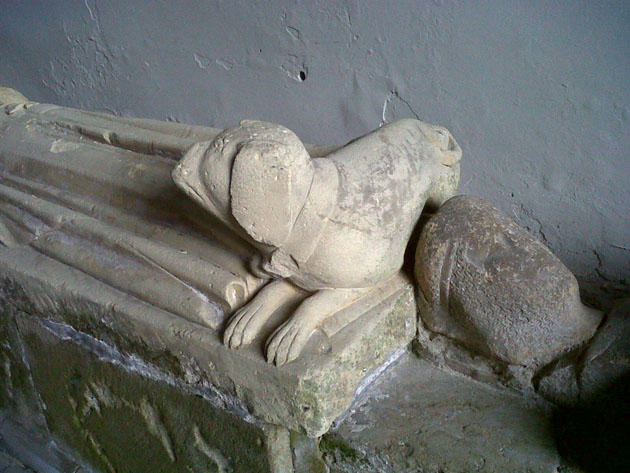
Lions for Lords and Hounds for Ladies. I’m searching these animal carvings and examining them in detail – looking to see how the medieval carvers gave life to a lion mane, or the curl of a dog’s tail.

The carvings were glorious, the detail extraordinary – especially on the alabaster carving, where armour and chainmail were life-like in detail.
I loved the dog, hound and lion characters too – highly stylised and full of personality.
From the 12th Century, animal statues were placed at the feet of the recumbent statues. They were the protector of the deceased in the afterlife. The real, or mythical creature placed in the carving represented a quality, or a vice and although the lion and dog seem most used, other animals can be seen. A dragon was associated with evil. Carvings also show heraldic beasts which would be taken from the deceased family’s coat of arms.
In the medieval abbey church The Basilica of Saint Denis in northern Paris there is a really special carving of a ferret, (looks a little otterish to me), at the feet of one of the recumbent figures. The ferret symbolises a skillful hunter, and virtue. I love this carving, the ferret creature looks as if he’s about to run off and get up to mischief!
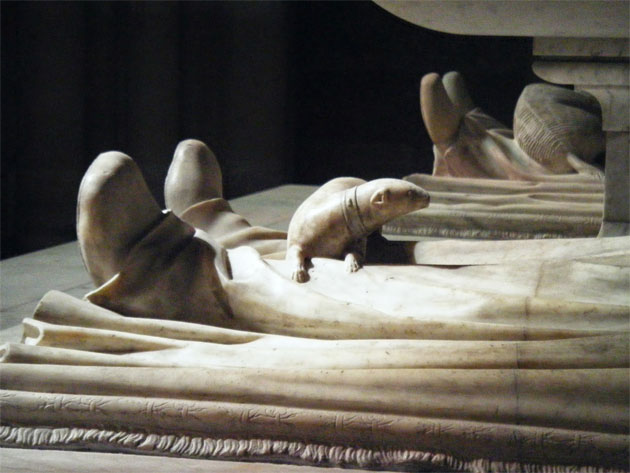

2 Comments
Very interesting article. I live near this church and have been trying to find out more about the Marmion tomb. I note you describe it as Derbyshire alabaster. Would it have been carved in Derbyshire and somehow transported (river?) to Tanfield? Or would it have been carved locally (which I doubt somehow).
Penny
The transport of stone at the time was a big undertaking. Mostly waterways and rivers were used. Road costs were often prohibitively expensive. Likely the alabaster from Derbyshire would be brought in slabs following the Trent, Humber and then the Ouse, ready for York carvers. I don’t know for sure, but I’ll see if I can dig up some further details. It is a beautiful church, and I must go back as I haven’t been for ages.